Wed, February 1, 14:02 PM EST
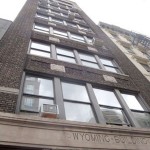
Gallery Installation Opens Feb. 2 at the Wyoming Building, #5 E. 3rd Street from 6-8pm.
We are in New York City for the final installation of Synchronous Objects: Degrees of Unison, a multi-part video and sound installation that we created using elements of our original online work and re-imagining them in space and time.
Unlike the web-based work, this installation gives an immersive and simultaneous experience of several objects. The sounds of the dancers and Bill Forsythe’s voice move through the space around you as you view 7 different visualizations playing out in sync in the 15 min time frame of the dance. For this installation we arranged the screens in a ring shape that is viewed from within. We’ve also done it as a forest of smalls screens at PACT in Germany and as large abstractions in a giant warehouse at the Taipei Arts Festival in Taiwan.
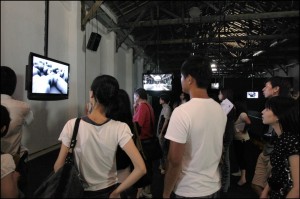
Synchronous Objects: Degrees of Unison installation at the Taipei Arts Festival
Andre Lepecki has also worked with the Goethe Institute NYC to organize an interesting symposium on the nature of the object in relation to performance in which Norah Zuniga Shaw will present Synchronous Objects and Forsythe’s concept of Choreographic Objects. We’re very interested in the perspectives of so many artists and scholars coming together and it is open to the public to listen in.
Here’s a link to more info:
http://www.e-flux.com/announcements/objects-in-performance/
See you!
Norah

Fri, March 18, 13:01 PM EDT
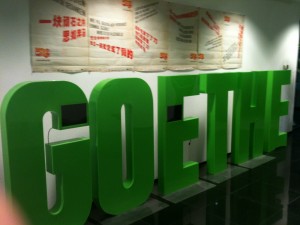
Synchronous Objects is still on the road showing up in cities far and wide from Beijing to Chicago and Zagreb to Bangalore. Of course you can always see it any time, any where online but The Goethe Institute has also made Synchronous Objects the subject of their Forsythe Module.
Curated by Petra Roggel, the Forsythe Module helps to share the work of Forsythe in locations not typically visited by the Company. We are doing this by exhibiting Synchronous Objects in a variety of installation formats: everything from working kiosks and interactive reading rooms like we did at the Wexner Center, Columbia College, SIGGRAPH etc. to immersive video installations that re-imagine the screen-based work in space and time as we did at ISEA-Rhur 2010 and will do next week at BADCo’s Symposium on choreography and software in Zagreb, Croatia and this summer at the Taipei Dance Festival alongside a large selection of Forsythe’s installation works.
Norah Zuniga Shaw (project co-creative director with Forsythe and Maria Palazzi) travels with the exhibitions to give public lectures and conduct interdisciplinary workshops. In 2010 the Goethe Institute sent Shaw and Synchronous Objects to the Tanzplatform and ISEA-Rhur 2010 in Germany and to Beijing, Taipei, and Tokyo. 2011 finds us in Croatia, Hungary, Turkey, Romania, India, Taiwan, Japan, New York City, Brazil, and beyond. Hope to see you around.
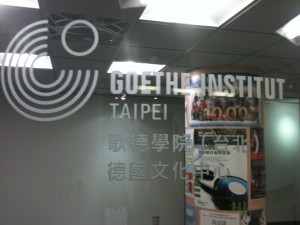

Sat, November 7, 10:10 AM EST
It has been a good week of exchange and discourse about the work at the http://www.tanzkongress.de/ in Hamburg.
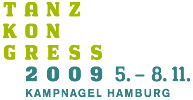
Steve Turk and I did a lecture demonstration and workshop on Synchronous Objects yesterday focusing on what is happening now with the project coming back into the studio and into classrooms (in dance and architecture). Continue Reading
Fri, July 10, 16:04 PM EDT
We are hard at work during the month of July refining the site and making some small additions. In the coming weeks look for some upgrades on the popular Counterpoint Tool and in our full score interface called The Dance. Also look for more ways to interact with and share content. And do let us know if you’re finding oddities or bugs.
We’ve also been sharing the project a lot at interesting venues and will continue to do so this summer including:
Spring Dance 2009, Utrecht, The Netherlands “Inside Movement Knowledge”
Sadler’s Wells, London, UK “Focus on Forsythe”
PACT Zollverein, Essen, Germany “Exploration 09″
Society for Animation Studies Conference, Atlanta, USA “The Persistence of Animation”
SIGGRAPH 2009, New Orleans, USA “Information Aesthetics Showcase”
and more…
We’re also happy to be featured on one of our favorite sites, visualcomplexity.com

Sat, June 27, 15:03 PM EDT
Mon, June 8, 9:09 AM EDT
Another great contribution from graduate student Lily Skove:
At the Ohio State University, The Advanced Computing Center for the Arts and Design (ACCAD) is a unique space for the convergence of distinct fields. Perhaps “collision” of distinct fields would be a more apt description, as “convergence” suggests easeful assimilation. Collaboration as collision necessitates the full force of each fields’ identity, traditions, and expertise entangling to create something new, and this is how I would describe ACCAD’s latest conquest, Synchronous Objects for One Flat Thing, reproduced. Working as a student on this project gave me the unique vantage point of observing and engaging experts at work in cross-disciplinary investigation. Continue Reading
Tue, May 26, 9:09 AM EDT
Matt Lewis is a computer scientist and collaborator on Synchronous Objects. His work in generative drawing was an inspiration for the generative drawing tool available on the site. If you have not played with this tool yet, give it a try, it uses data from the dance to drive the motion of the “paint brushes” and create interesting animations and ultimately drawings. Let us know what you think! –Norah
Here are some thoughts from Matt:
MATT: In addition to making choreographic concepts more comprehensible to other disciplines, we are very interested in ways in which choreographic knowledge is useful in other contexts. Exposure to such ideas should provide new ways of seeing, communicating, and evaluating relationships among elements in complex dynamic systems. Having not had much exposure previously to contemporary dance, I now have a much greater awareness of its complexity and breadth of conceptual material. It’s intriguing to me that I see much richer relationships between dancers and their movements than I had before being introduced to these concepts. Continue Reading

Mon, May 11, 12:12 PM EDT
Mara Penrose, an MFA student, and Hannah Kosstrin, a PhD student in the dance department at the Ohio State University, offer insights about Synchronous Objects from the perspective of Labanotation and dance history in a recent interview with graduate student Lily Skove.
Lily Skove: Can you speak to your interest in Labanotation in relation to Synchronous Objects?
Mara Penrose: Systems of annotation represent the movement they describe. Therefore, dance notations need to be specific to the piece itself and the intended audience. Continue Reading
Thu, April 30, 10:10 AM EDT
I have invited collaborators on the project to periodically contribute to the blog describing their roles and interests in relation to Sync/O. This post is written by one of our graduate students in dance and tech, Lillian Skove:
“Engaging with Synchronous Objects as a choreographer, I was very interested in how choreographic thinking is a way of knowing that offers new insight into other fields from geography, to computer programming, to architecture. I was also interested in the ways that other fields shed light on my own choreographic practices and turn my understanding of choreography inside out. In the process of creating I seek to undo what I think I know choreography is so that I can be open to inventive ways of working. Interacting with the Synchronous Objects website is a chance to re-think what choreography is, from a series of actions, to an example of counterpoint, to a study of the responsibilities and dependencies among a group—and the list goes on.
Up-ending my assumptions of what choreography is has several practical consequences that are evident as I create in the studio. Continue Reading

Thu, April 30, 10:10 AM EDT
After being in Europe for a week and sharing the project at Spring Dance and in the Sadler’s Wells “Focus on Forsythe” festival of events, our interest in sustained dialog about the project continues. What happens after the initial introduction? Which objects draw different people in which ways? We hear often from choreographers that the counterpoint tool captures their interest. It was great to hear in london from people in the audience who already knew the project, like professor Sarah Rubidge who shared her interest in the generative drawing tool (one of our favorites). It was also nice to share the video abstraction tool with a young dance / tech presenter from Norway who wanted to explore patterns in her own work. We’d love to know more. Be in touch here on the (blog) or on twitter, we tweet collectively as https://twitter.com/SyncObjects and I tweet as nzshaw.
—Norah








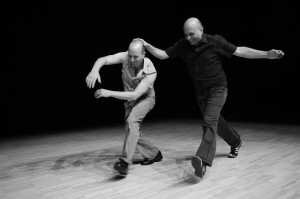

Recent Comments